Invented by Adam Bess, Oleg BESS, 4Medica Inc
In today’s healthcare landscape, effective communication is crucial for providing quality patient care. However, traditional methods of communication, such as phone calls and pagers, are often inefficient and can lead to delays in care delivery. This is where integrated communication systems come into play.
These systems enable healthcare providers to communicate and collaborate in real-time, regardless of their physical location. They allow for secure messaging, voice and video calls, file sharing, and even telehealth consultations. By integrating these communication tools with existing EHR systems, healthcare professionals can access patient information instantly, leading to improved decision-making and better patient outcomes.
The market for these systems is being driven by several factors. Firstly, the increasing adoption of EHRs across healthcare organizations is creating a need for seamless integration with communication tools. Providers are recognizing the importance of having all relevant patient information readily available during communication, and integrated systems provide a solution to this challenge.
Secondly, the COVID-19 pandemic has accelerated the adoption of telehealth and virtual care. As healthcare providers strive to deliver care remotely, the demand for integrated communication systems that support telehealth consultations has surged. These systems enable secure video calls and messaging, allowing healthcare professionals to connect with patients virtually and provide necessary care without physical contact.
Furthermore, the growing emphasis on care coordination and team-based care is driving the need for integrated communication systems. In today’s complex healthcare environment, multiple healthcare professionals are involved in a patient’s care journey. Integrated communication systems facilitate seamless communication and collaboration among these professionals, ensuring that everyone is on the same page and working towards a common goal.
The market for systems and methods for integrating communications in a healthcare network is highly competitive, with several key players vying for market share. Companies such as Cisco Systems, Vocera Communications, and TigerConnect are leading the way in developing innovative solutions that meet the unique communication needs of healthcare organizations.
As the market continues to evolve, there are several trends that are shaping its future. Artificial intelligence (AI) and machine learning (ML) are being integrated into communication systems to automate tasks such as routing messages and prioritizing alerts. This not only saves time but also improves efficiency and reduces the risk of human error.
Additionally, the rise of mobile technology is driving the demand for communication systems that are accessible on smartphones and tablets. Healthcare professionals are increasingly relying on mobile devices for communication, and integrated systems that offer mobile compatibility are gaining traction in the market.
In conclusion, the market for systems and methods for integrating communications in a healthcare network is experiencing rapid growth and is poised to transform the way healthcare providers communicate and collaborate. With the increasing adoption of EHRs, the demand for seamless integration with communication tools has never been higher. As the market continues to evolve, innovative solutions that leverage AI, ML, and mobile technology will shape the future of integrated communication systems in healthcare.
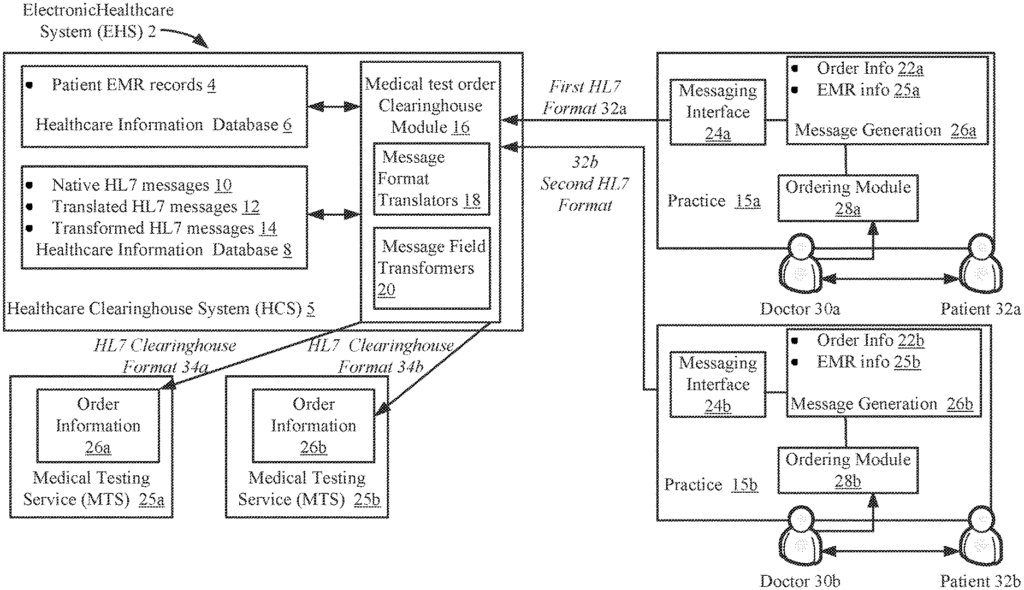
The 4Medica Inc invention works as follows
The electronic healthcare system is described. These electronic healthcare systems may include modules that allow access to patient electronic medical records, and order medical services. This involves HL7 communication between healthcare organizations. Custom communication interfaces can be used to translate and parse HL7 messages. The methods and apparatus for generating custom communication interfaces are described. In one embodiment, custom communications interfaces can generated by machine learning algorithms that are trained to recognize different data types within message segments in HL7 messages.
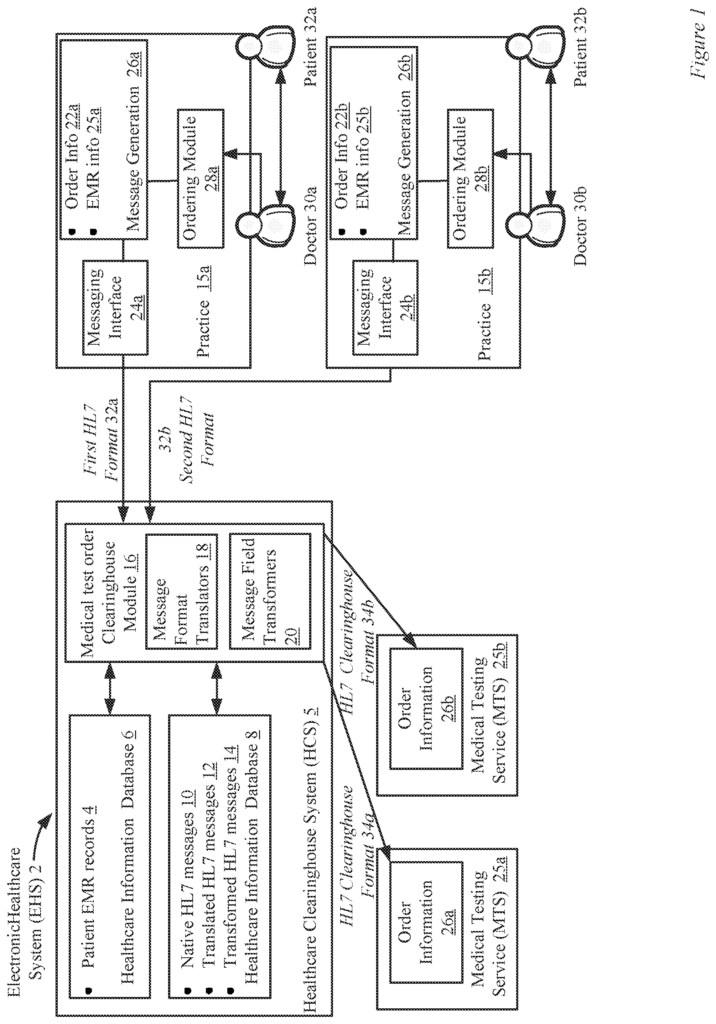
Background for Systems and Methods for Integrating Communications in a Healthcare Network
Electronic Healthcare Information Networks” link hospitals, insurers and physician practices in order to provide healthcare services such as accessing patient information, ordering labs and billing patients. There are some standards for communications that allow communication between healthcare providers on an electronic healthcare network. Health Level-7 is an international standard that allows the transfer of clinical and administrative information between different software applications.
Unfortunately, HL7 comes in many versions. Many healthcare providers also have their own customized versions of the HL7 standard. When integrating disparate providers of healthcare into a single electronic healthcare information system, even if they use a standard communication, like HL7 is still takes a lot of time to make sure that all communications are properly interpreted by everyone in the network. A precise communication is necessary because a mistransfer of healthcare information could cause harm to patients. “In view of this, it is desirable to have a method and apparatus that simplifies the integration of healthcare providers’ communication into an electronic health information network.
Electronic healthcare systems are described. Electronic healthcare systems may include modules that allow patients to access their electronic medical records or order medical services. The electronic healthcare system can include one or multiple communication interfaces that are configured to communicate with electronic device. Electronic devices such as servers, mobile devices, and medical testing services can be linked to medical insurance providers, practices, and patients. In one embodiment, EHS can instantiate in a cloud computing system including servers with memory, processors and communication interfaces.
In one embodiment, the EHS communication interfaces can be configured in a way that implements health level 7 (HL7) messages. HL7, an international standard, specifies flexible standards, guidelines and methodologies that allow different healthcare systems to communicate. These guidelines, or data standards, are rules that allow healthcare applications to share and process information in a uniformed and consistent way. These data standards were designed to make it easier for healthcare organizations to share clinical information.
Unfortunately, many versions of HL7 have evolved over time.” Many healthcare organizations also customize HL7 non-standardly. When integrating HL7 communication from different healthcare organizations, it may be necessary to create custom interfaces that translate HL7 messages in a format specific to one healthcare organization into a format specific for another healthcare organization.
The translation must be accurate because a mistranslation can lead to the loss of vital patient information or the wrong implementation of medical procedures. The development of custom interfaces to ensure accurate communication translations may take several months. “In view of the above methods and apparatus described below can simplify and accelerate the process of creating custom communication interfaces that are used to translate HL7 in an electronic health system.
The The
The data features can be selected from the group consisting a total number of letters in the data value, a total number of numbers in the data value, a ratio between the total number to the total amount of numbers, characters, and sub-fields within each field, as well as a cosine similarity, Jaccard similarity, Levenshtein distance, and a feature hashing. The data features are selected from a group including a number of characters, total letters, total numbers, and ratios between these values.
In other embodiments the first threshold can be higher than 100. In a different embodiment, the threshold value for the first step can range between 100 and 200. The second threshold can be higher than 90%. In another embodiment, the threshold can be set between approximately 75 and 95 percent.
In other embodiments, you can select the plurality data types from a group that includes a patient ID or an External ID as well as a name of the patient, date of birth, gender, address, phone number, primary language, marital status, and social security number. The plurality of data can also be selected from the second group of alternate patient IDs, mother’s maiden names, race, country codes, religions, driver’s licence numbers, birth places, multiple birth indicators and nationalities.
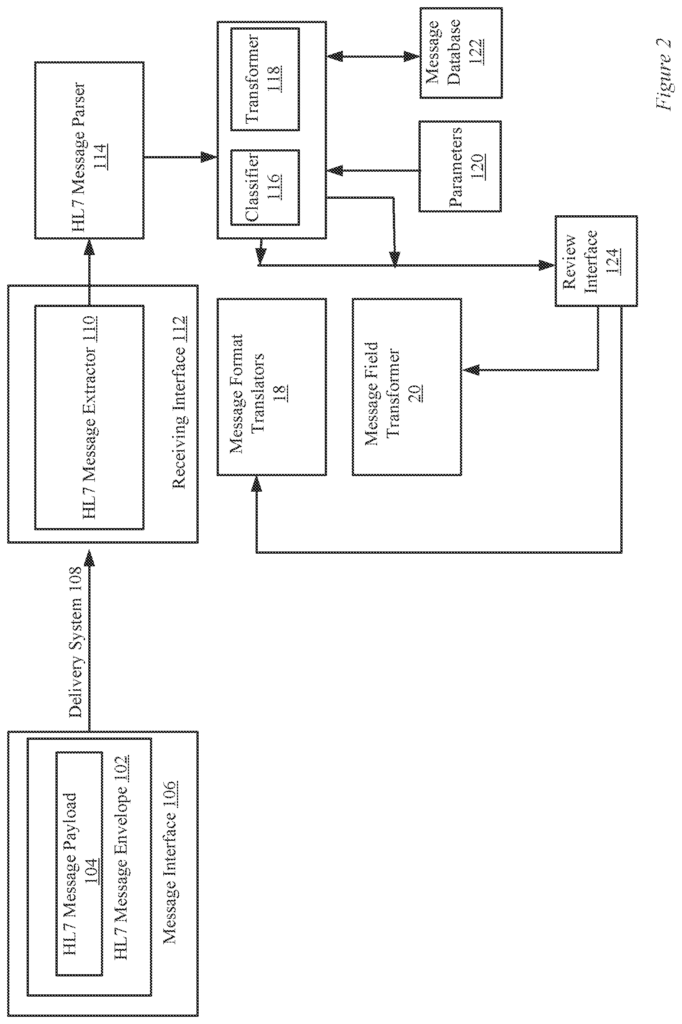
The method can also include: “In further embodiments the method can comprise: 1) generating an HL7 for a secondary healthcare information source, where the HL7 includes the PID segment, and where the PID segment contains the PID data segment, and where the position of the data field in the segment PID is different from that in the segment PID, 2) updating electronic records in a database of healthcare information using first values of the data from the field PID associated with first type, 3) before parsing the segment PID in the second plurality Data features can be weighted when the machine learning algorithm is being trained.
In another embodiment, “the method can also include: 1) for a 2nd data field within the PID segment of the 1st plurality messages, i. determining that the 2nd data field has been classified as a first data type, whereby the number of first times exceeded a 3rd threshold value; ii. determining that the 2nd data field belongs to a2nd data type, whereby the percentage of first times exceeding a 4th threshold value is determined, and iii. In the embodiment above, the third threshold can be the same as the first threshold. The fourth threshold value can also be equal to that of the second threshold.
In a further embodiment, “the method can include: 1) receiving a fourth plurality HL7 from a healthcare information second source, where each third plurality includes the plurality HL7 segments; 2) parsing each third plurality HL7 to identify the Patient Identification (PID), message segment among the HL7 segments, where a 2nd order of plurality data types within the PID segment is unknown; and 3) for each data field of the PID segment in each third plurality HL7, The first and second positions can be at a different location in the PID segment of the first healthcare source than the second.
The method can also include: “In a further embodiment, the method includes 1) parsing the HL7 first message plurality to identify a HL7 second message, where the second segment contains a second plurality data types, each associated with a data field in the segment, and where the order of these data types from the healthcare information source in the segment is unknown. 2) For each data field in the segment, in each first HL7 message, i. determining whether the value is there; ii.
The disclosure may also include a method for an electronic health system The method is characterized by: 1) receiving from a healthcare In some embodiments, only a portion of first plurality The first message segment may also be a message segment for patient
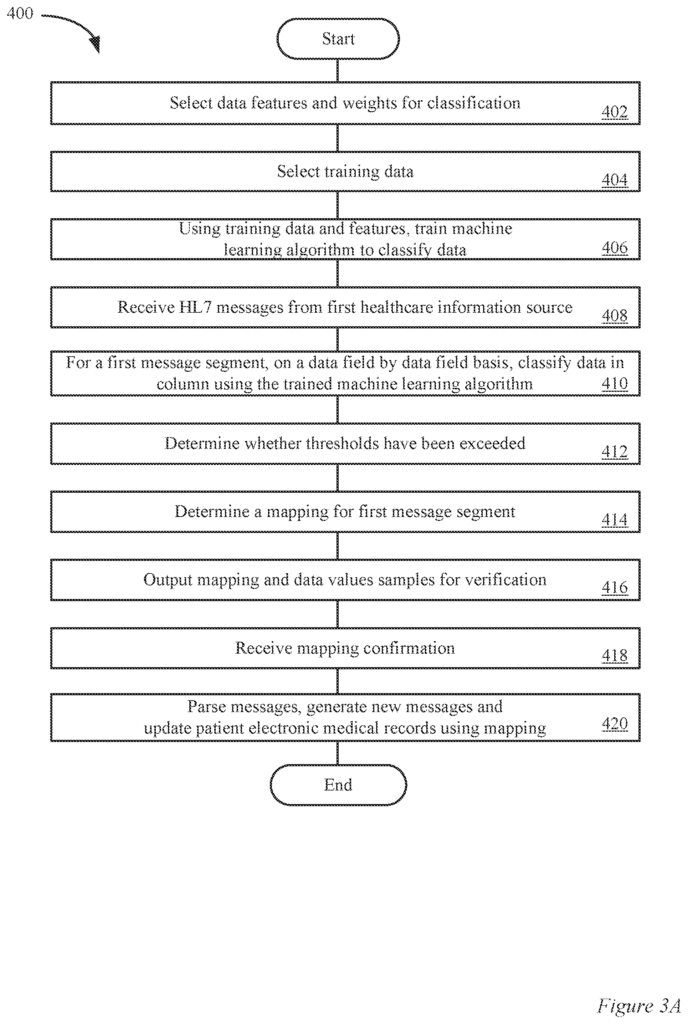
Click here to view the patent on Google Patents.
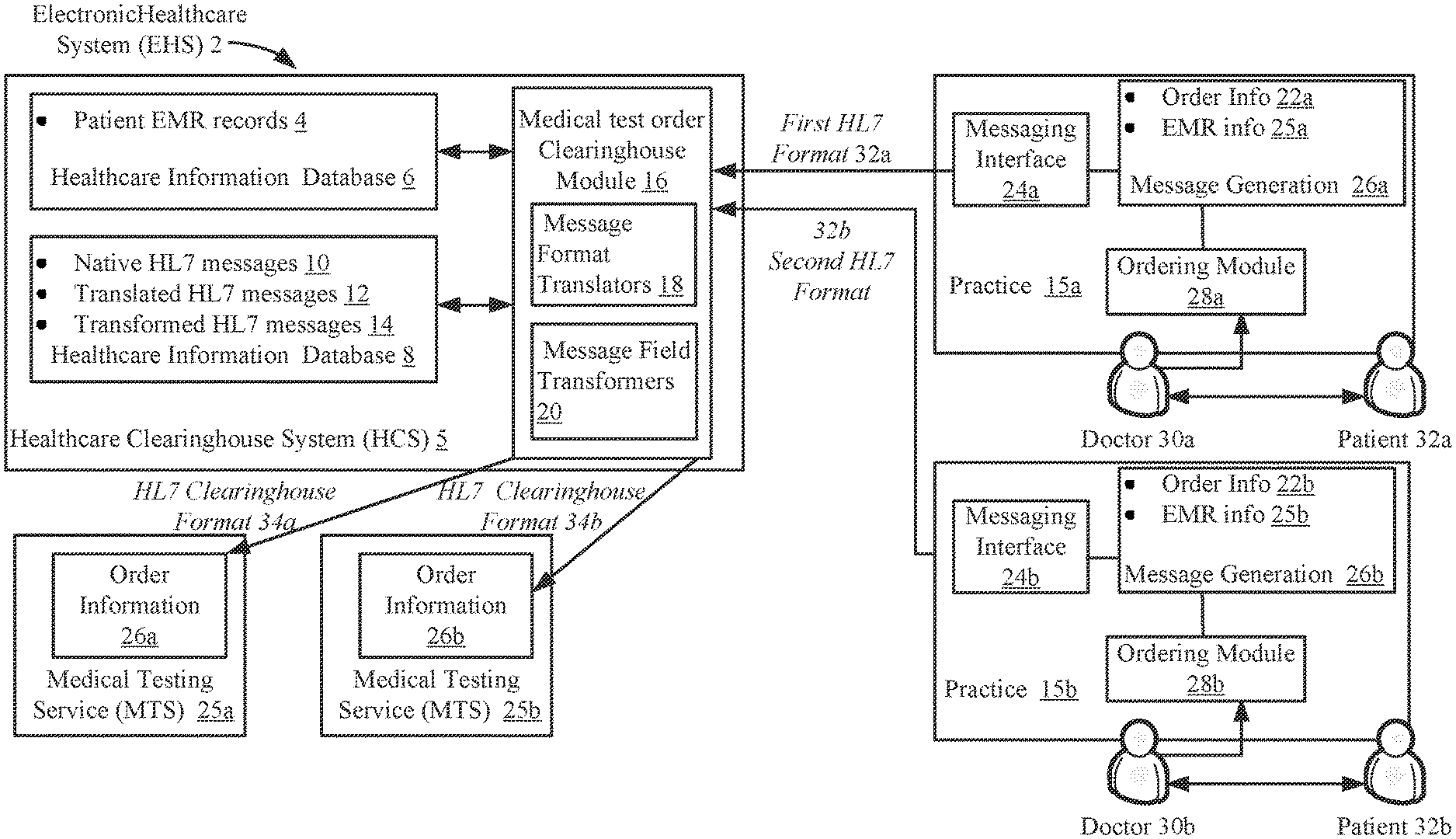
Leave a Reply